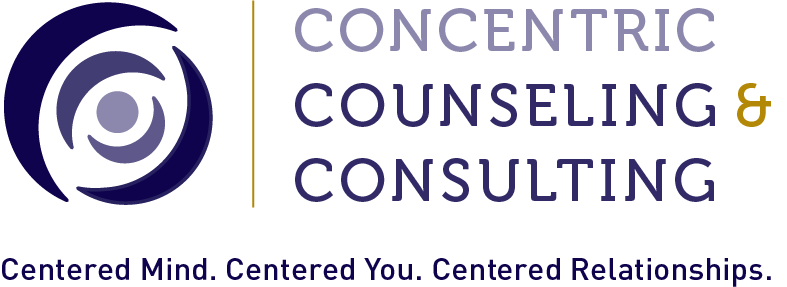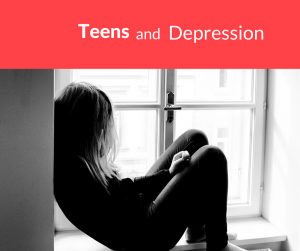By Concentric Counselor Jennifer Larson, LCPC, NCC
During the Spring of this year, I popped onto the Dear Abel and Sofi advice column for the first time and came across a story about a Firefighter’s struggle with grief & loss after he needed to leave the workforce due to injuries he sustained on the job. He was in the rebuilding stage and had recently turned his passion for woodworking into a small business that had been met with tireless effort and financial struggles. While this former firefighter shared his story and posed questions on the advice column, I could not help but see his intrinsic desire to connect with other people as he grieved and was rebuilding his life. Seeking connection, feedback, validation, and ideas from others was a part of this man’s grieving and recovery process.
Reading this story jogged my memory about a blog post I started in August 2018 (and didn’t finish) about grief & loss. At that time, I became re-enlightened about the additional types of grief & loss that exist, namely the loss of thoughtfully designed objects and structures in our country, and the unfortunate outcome this can have on social and human connectivity. I’ll touch upon that later in this blog post.
For many, grief & loss cannot exist without experiencing some form of connection with oneself or others, and rebuilding in the wake of grief & loss cannot exist without human connection. The firefighter's story made me think about my own grief & loss experiences felt during the earlier part of the year. The flood of feelings and experiences that emerged from within me were great, and subsequently, I decided to really reach out to others.
During my grief & loss earlier this year, I allowed myself to feel and accept my grief by intentionally creating space and capacity to feel a myriad of feelings. I also reached deep within to try to understand the messages, gifts, and lessons in my losses. Reaching out to family, friends, my therapist, and colleagues granted me the opportunity to take care of myself and to feel their heartfelt and unwavering support. The swell of feeling cared for, respected and supported by others was truly one of the best gifts I ever experienced. Eventually, I felt myself naturally propelling forward by carrying my values with me and, yet, creating a semi-new reality ahead. My grieving process, particularly connecting with others, reminded me of the firefighter’s desire to connect with others through the advice column as he grieved and re-built his life.
For some, grief & loss can be experienced as a harrowing crisis and this crisis can truly be fodder for future opportunities and growth. And, through my own experiences as well as listening to others’ experiences, I have come to truly appreciate that grief & loss comes in many forms and shapes.
Long gone are the days when we thought of grief & loss solely as one facing their own mortality due to a terminal illness or losing a loved one to death. These are most certainly some of the most difficult types of grief & loss people can face in a lifetime as it can bring about great pain and suffering. The loss of a loved one can stir up a deep emotional response, physical and behavioral changes. Other forms of losses can bring about up deep emotional, physical, and behavioral responses and changes as well.
Experiencing a significant life transition (such as entering into college or parenthood), a childhood robbed of important attachment figures or childhood experiences, the demise of an intimate relationship through betrayal & infidelity, and the loss of being connected with one’s feelings or reality by route of escaping into addiction, perpetual distraction or fantasy -- all of these examples fall under the umbrella of grief & loss.
People who experience grief & loss can go through a number of stages, sometimes in sequential order, other times bouncing back-and-forth among the stages, and for some, remaining stuck in a stage or bypassing certain stages all together. There are a number of identifiable stages of grief listed, one of the more common models is Dr. Kubler-Ross’ modified 7 Stages of Grief & Loss. For brevity, here are those 7 Stages:
Shock (Initial paralysis hearing the news)
Denial (Trying to avoid the inevitable)
Anger (Frustrated outpouring of bottled-up emotion)
Bargaining (seeking in vain to find a way out)
Depression (Final realizations of the inevitable)
Testing (seeking realistic solutions)
Acceptance (Finally finding the way forward)
Having the understanding and knowledge of The 7 Stages of Grief & Loss can be instrumental in cultivating understanding which can eventually contribute towards facilitating growth and change. As I highlighted earlier, I believe interpersonal relationships -- connecting with others -- is also important to incorporate during the grief & loss process and survival. Whether it’s with a trusted family member or friend, therapist, or your community can be healing as your experience and move through your grieving process and recovery.
Being there for people by exercising empathy, attunement, and being fully present is critical as one heals. Also, giving yourself permission to be vulnerable to express yourself with people you feel safe with creates a holding space for you and your experiences. Emotional and relational connection like these brings about a deeper understanding of one’s experiences which can then help promote compassion, transformation, healing, and recovery. The emotional-felt experience within a relational context is vital for healing and survival during grief & loss.
I am going to revisit something I referenced earlier in the blog, and I know it may seem like I am veering off (which I am) and going on a tangent, but this is an area I want to weave into the area on grief & loss.
Around last summer, my mother-in-law remarked how the United States tends to tear down old buildings to make space for newer buildings to be built. She conveyed her concern about our country undermining the inherent value, respect of others, its history and imprint, and ultimately the loss of felt social and human connection by tearing down old buildings. The decimation of older structures and the lack of integrating new and old buildings together equates with grief & loss for the people of this country. This was the message I heard, and it struck me.
The following day after my mother-in-law shared her perspective, I had read "He Knows What You Really Need" article in Psychology Today which highlights Glenn Adamson's perspective on the value of knowing how objects or things are made or cultivated. The article revealed Adamson's book, "Fewer, Better Things" which highlights the act of purchasing or collecting mass-produced items can water-down the value and connection between consumers (people) and goods. Glenn believes diving deeper into learning more about the maker and the making process promotes greater understanding and respect for the maker and object, and overall promotes social and emotional connectivity. Mass produced items create a lack of human connection - loss, in other words. Experiencing an artisan’s creative piece awakens our senses and taps into an emotional and human connection with its maker.
And then the following night back in August 2018 (yes, I’m serious about these sequential events), I found myself seeing these same themes emerge in the then new show, "Making It" hosted by Amy Poehler and Nick Offerman. The show is about bringing master craftspeople and artisans together to compete in a friendly and fun environment. During the crafters' introductions, one of the makers remarked that crafting in today's culture has dwindled down as people expend more time and energy on their phones. Crafting with others creates memories, she added. Memories filled with emotional and social connections.
The idea is that thoughtfully-designed, emotionally and physically labored crafts, objects, and buildings promote greater human connectivity. Eliminating them only promotes greater relational loss. I really started to sit with the idea of how the loss of certain physical objects or structures impact us psychologically, relationally, and culturally, and what this could mean for us and perhaps, for human evolution.
Of course, facing a terminal illness or experiencing the loss of a loved one pales in comparison to the loss of not knowing the maker of a vase on your dining room table. I am not making the comparison that both are similar in terms of its impact when it comes to grieving. But, I do think it’s worth acknowledging that grief & loss comes in many different shapes and forms. It’s not black-and-white.
So, here are my hopes. My hope is we can continue to acknowledge, better understand and define the various forms of grief & loss that touch people in various ways both intimately and globally. That we can all take a leap by vulnerably reaching out to others for support during our own grieving journey. We can be truly available and present to those who are grieving. We can take a moment to think about preventing unnecessary losses. And, we can appreciate the preservation of human connection, particularly in the wake of grief & loss. Because human connection is truly a powerful thing, take it from me.








